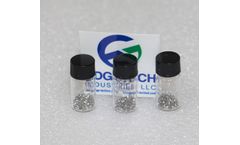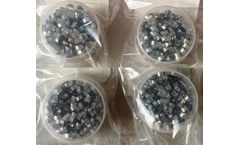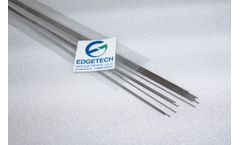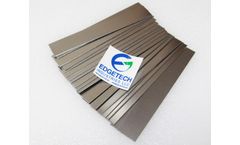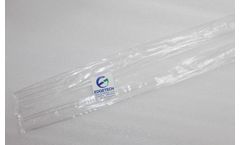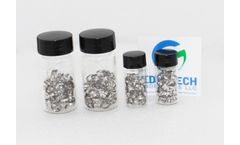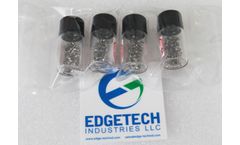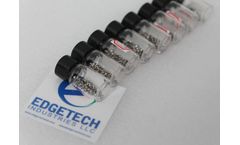Refine by
Biocompatible Articles & Analysis: This-Year
25 articles found
Furthermore, tantalum's resistance to corrosion is beneficial in medical applications. Tantalum is biocompatible and does not corrode when in contact with bodily fluids. This property makes it suitable for surgical implants and medical devices, ensuring longevity and biocompatibility in critical healthcare applications. ...
Idiopathic pulmonary fibrosis (IPF) is a devasting lung disease characterized by progressive scarring of lung tissue. As fibrosis develops, patients experience worsening shortness of breath, reduced lung capacity and ultimately respiratory failure. Current therapies for IPF rely on oral administration of pirfenidone and nintedanib, two FDA-approved drugs that slow disease progression. While ...
These materials are favored not only for their superior radiopacity but also for their biocompatibility and resistance to corrosion. Specially designed to meet diverse medical needs, these marker bands can now be tailored to minimal dimensions without compromising functionality. ...
Chitosan is a natural, biodegradable polysaccharide derived primarily from the shells of shrimp, crabs, and fungi. Due to its biocompatibility, antimicrobial properties, and film-forming capabilities, chitosan is widely used in food preservation, water treatment, cosmetics, agriculture, and biomedical applications. 1. ...
ByMatexcel
Our tantalum marker bands are particularly favored in the medical field for their biocompatibility and resistance to corrosion, fulfilling the stringent demands of healthcare environments. ...
Drug Delivery Systems Beyond their role in vaccination, VLPs also hold potential as drug delivery systems. Their nanoscale size, biocompatibility, and ability to encapsulate therapeutic agents make them suitable carriers for both small molecules and larger biomolecules like proteins and nucleic acids. ...
For medical applications, biocompatibility is essential, while industrial uses demand resistance to environmental elements. ...
Orthopedic Devices: Nitinol’s biocompatibility and fatigue resistance are leveraged in bone fixation devices. Advantages of Nitinol Tubing in Healthcare: Minimally Invasive Procedures: Reduces patient recovery time and hospital stays. Biocompatibility: Safe for long-term implantation in the human body. Durability: Withstands repeated stress without failure. ...
Superelasticity: At body or ambient temperatures, Nitinol can stretch and return to its original state instantly. Biocompatibility: Safe for use in medical and implantable devices. Corrosion Resistance: Resistant to most forms of chemical degradation. ...
The innovation in materials, such as platinum-iridium alloys, enhances both visibility and biocompatibility, making these bands indispensable tools in modern neurovascular treatments. ...
Its unique properties—shape memory, superelasticity, and biocompatibility—make it a superior choice for implants that adapt to the body’s natural movements while promoting faster, more stable healing. ...
Polyethylene glycol is applied to nanoparticle surfaces to improve their biocompatibility and stability. When multiple administrations occur polyethylene glycol gets recognized by the mononuclear phagocytic system as a foreign substance which activates the immune system and results in the fast clearance of the substance thus preventing the drug from reaching target cells. ...
Today, manufacturers focus on creating radiopaque marker bands with superior visibility under fluoroscopy while ensuring durability and biocompatibility. Materials such as tantalum and platinum-iridium alloys have quickly become the industry's gold standard due to their high density and remarkable radiopacity. ...
These small yet essential components ensure visibility, precise positioning, and contribute to the success of medical implants and device placement procedures. Tantalum is a biocompatible metal with excellent radiopacity, making it an ideal material for medical marker bands. ...
This makes it an excellent material for implants and prosthetics, as it can integrate seamlessly with the body. l Biocompatibility: bioglass is highly biocompatible, meaning it does not elicit an adverse immune response when implanted in the body. ...
ByMatexcel
Its unique properties, such as biocompatibility, bioactivity, and structural similarity to human bone and teeth, make it indispensable in fields like biomedical engineering, environmental science, and advanced materials. ...
ByMatexcel
The benefits of using radiopaque markers are clear, making them an essential tool in the healthcare industry. The Safety and Biocompatibility of Platinum Iridium Markers Platinum Iridium Markers are an essential aspect of modern medical treatment, particularly in the field of radiation therapy. They serve as a reference point for accurately delivering radiation doses to ...
Watertown, MA – March 24, 2025 – Biopharma PEG, a leading supplier of high-quality polyethylene glycol (PEG) derivatives, highlights its innovative product DSPE-PEG-Mannose, an advanced biomedical polymer with significant potential in drug delivery, tumor-targeted therapy, tissue recognition, and adhesion.Structural Advantages of DSPE-PEG-MannoseDSPE-PEG-Mannose is composed of three key ...
The use of Tantalum in these bands ensures that they are not only visible but also biocompatible, reducing the risk of adverse reactions. In addition to their radiopacity, marker bands must be durable and resistant to corrosion. ...
Tantalum tubes are highly specialized components known for their exceptional corrosion resistance, high melting point, and biocompatibility. Made from tantalum, a rare and refractory metal, these tubes are widely used in industries that demand reliability under extreme conditions. ...



